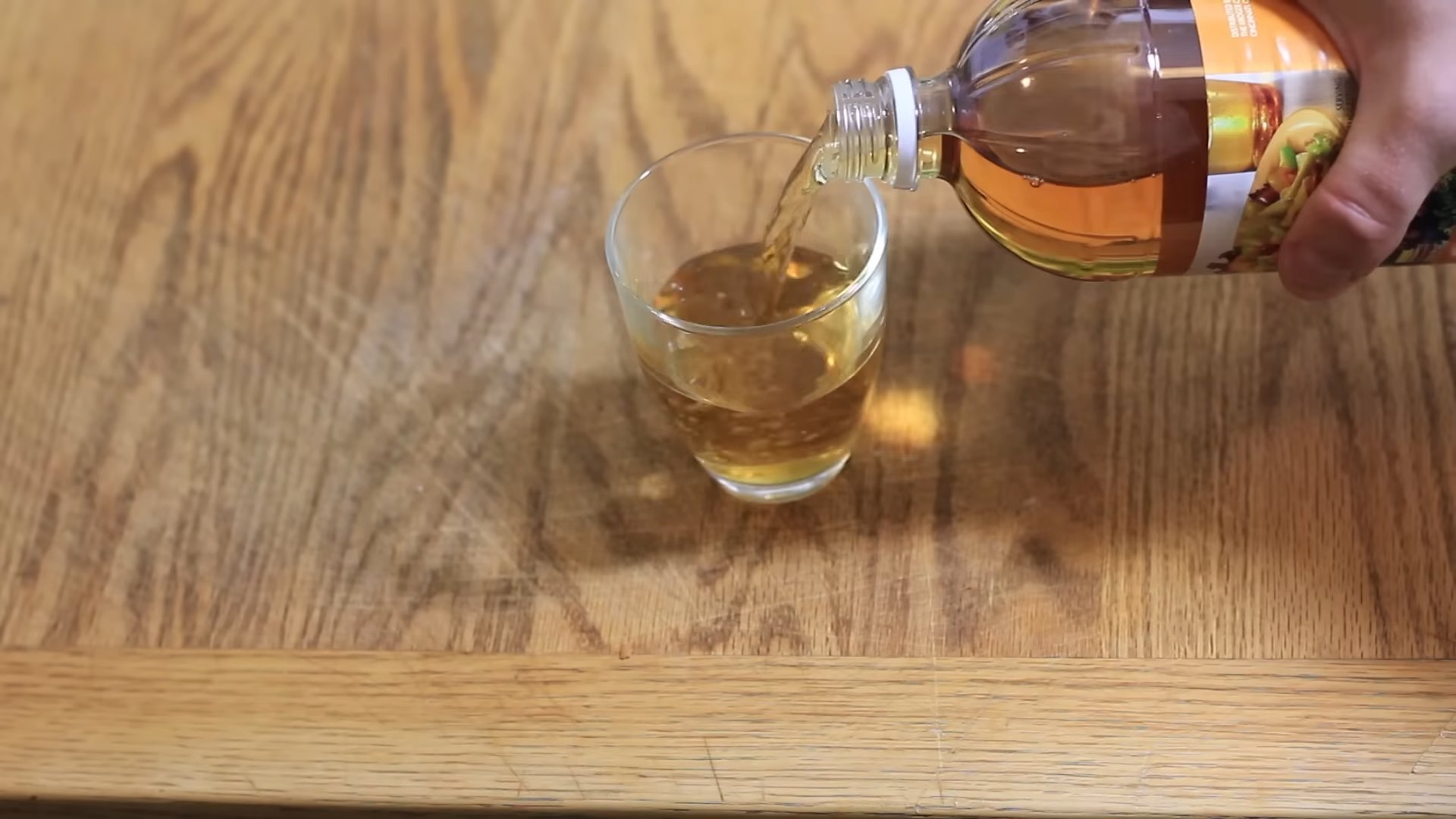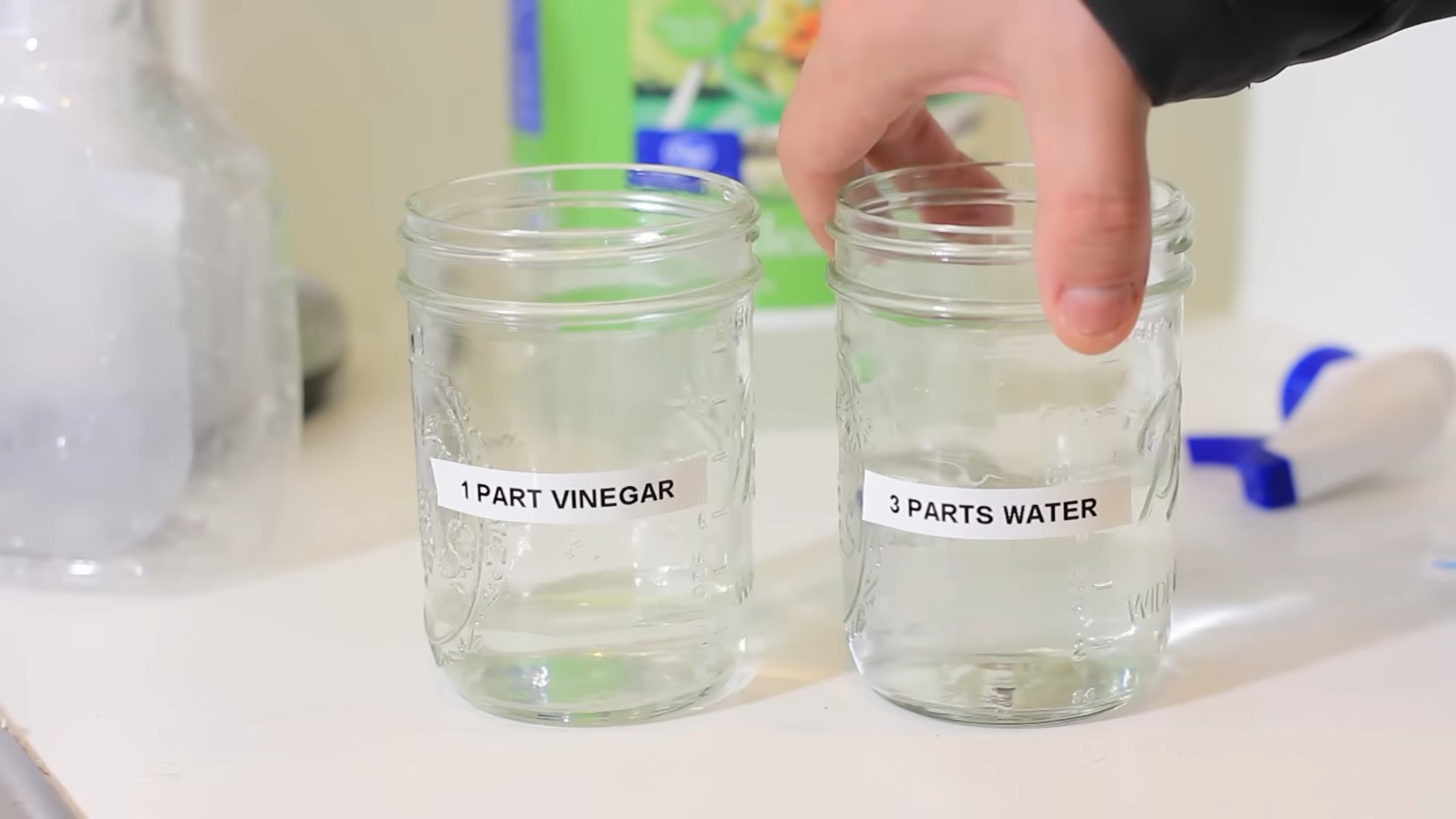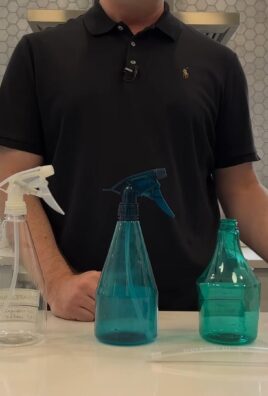Vinegar cleaning tips are about to revolutionize your cleaning routine! Are you tired of harsh chemicals and expensive cleaning products that promise the world but deliver little? Imagine a world where you can tackle grime, eliminate odors, and disinfect surfaces with a single, affordable, and natural ingredient. That’s the power of vinegar, and I’m here to show you how to harness it.
Vinegar’s cleaning prowess isn’t a new discovery. In fact, its use dates back centuries! Ancient civilizations, from the Egyptians to the Romans, utilized vinegar for its antiseptic and preservative properties. It wasn’t just for cleaning; it was used for medicinal purposes and even food preservation. This humble liquid has a rich history, and now, it’s making a comeback as a go-to solution for eco-conscious cleaning.
In today’s world, we’re all looking for ways to simplify our lives, save money, and reduce our environmental impact. That’s where these vinegar cleaning tips truly shine. With rising concerns about the harmful effects of chemical cleaners on our health and the planet, vinegar offers a safe, effective, and budget-friendly alternative. I’m going to share my favorite DIY vinegar cleaning hacks that will leave your home sparkling clean, naturally. Get ready to ditch those expensive cleaners and embrace the power of vinegar!

Unlocking the Power of Vinegar: Your Ultimate DIY Cleaning Guide
Hey there, fellow cleaning enthusiasts! I’m so excited to share my go-to cleaning weapon with you: good old vinegar! It’s cheap, effective, and surprisingly versatile. Forget those expensive, chemical-laden cleaners – vinegar can tackle almost anything in your home. Let’s dive into some amazing DIY cleaning hacks using this natural wonder.
General Vinegar Cleaning Tips: The Foundation for Success
Before we jump into specific projects, let’s cover some essential vinegar basics:
* Dilution is Key: Always dilute vinegar with water. A 50/50 solution is generally safe for most surfaces, but for delicate materials, start with a weaker concentration (e.g., 1 part vinegar to 2 parts water).
* Test First: Before applying vinegar to a large area, always test it on a small, inconspicuous spot to ensure it doesn’t damage or discolor the surface. This is especially important for natural stone, wood, and painted surfaces.
* Ventilation Matters: Vinegar has a strong odor, so make sure to open windows or turn on a fan while cleaning. The smell dissipates quickly, but good ventilation will make the process much more pleasant.
* White Vinegar is Your Best Friend: While other types of vinegar exist, white distilled vinegar is the cleaning champion. It’s clear, inexpensive, and has the right acidity for effective cleaning.
* Don’t Mix with Bleach: This is crucial! Mixing vinegar with bleach creates toxic chlorine gas, which is extremely dangerous. Never, ever combine these two cleaning agents.
Cleaning Your Kitchen with Vinegar: A Sparkling Transformation
The kitchen is a breeding ground for grime, but vinegar can handle it all!
Cleaning Your Microwave
1. Prepare the Solution: In a microwave-safe bowl, mix 1 cup of water with 1/4 cup of white vinegar.
2. Microwave Magic: Place the bowl in the microwave and heat on high for 5-7 minutes, or until the solution boils and the microwave is filled with steam.
3. Steam Clean: Let the bowl sit in the microwave for another 5-10 minutes. The steam will loosen the grime and splatters.
4. Wipe Away the Mess: Carefully remove the bowl (it will be hot!) and wipe down the inside of the microwave with a clean cloth or sponge. The grime should come off easily.
5. Final Touches: For stubborn spots, dip your cloth or sponge in the vinegar solution and scrub gently.
Degreasing Your Stovetop
1. Remove Loose Debris: Use a dry cloth or paper towel to wipe away any loose food particles or grease from the stovetop.
2. Vinegar Spray: Fill a spray bottle with a 50/50 solution of white vinegar and water.
3. Spray and Soak: Spray the vinegar solution generously onto the stovetop, focusing on areas with heavy grease buildup. Let it sit for 5-10 minutes to loosen the grease.
4. Scrub and Wipe: Use a non-abrasive sponge or cloth to scrub the stovetop. For tough grease, you can sprinkle some baking soda onto the surface before scrubbing.
5. Rinse and Dry: Wipe the stovetop with a clean, damp cloth to remove any vinegar residue. Dry with a clean towel.
Shining Your Sink
1. Rinse the Sink: Rinse the sink with water to remove any loose debris.
2. Vinegar Power: Pour undiluted white vinegar into the sink, coating the entire surface.
3. Let it Sit: Let the vinegar sit for 15-20 minutes to disinfect and dissolve mineral deposits.
4. Scrub and Rinse: Use a sponge or scrub brush to scrub the sink, paying attention to the drain and faucet areas.
5. Rinse Thoroughly: Rinse the sink thoroughly with water to remove all traces of vinegar.
6. Shine it Up: For extra shine, sprinkle some baking soda into the sink and scrub with a damp sponge. Rinse again and dry with a clean towel.
Cleaning Your Dishwasher
1. Empty the Dishwasher: Make sure your dishwasher is empty.
2. Vinegar Bath: Place a dishwasher-safe cup or bowl filled with 1 cup of white vinegar on the top rack of the dishwasher.
3. Run a Cycle: Run the dishwasher on a hot cycle. The vinegar will help to remove grease, grime, and mineral deposits.
4. Optional Baking Soda Boost: After the vinegar cycle, sprinkle 1 cup of baking soda on the bottom of the dishwasher and run a short, hot cycle. This will help to deodorize and further clean the dishwasher.
Bathroom Bliss: Vinegar to the Rescue
The bathroom can be a tough cleaning challenge, but vinegar is up to the task!
Cleaning Showerheads
1. Vinegar Soak: Fill a plastic bag with white vinegar.
2. Secure the Bag: Attach the bag to the showerhead, ensuring the showerhead is completely submerged in the vinegar. Use a rubber band or twist tie to secure the bag.
3. Soak Overnight: Let the showerhead soak in the vinegar overnight. This will dissolve mineral deposits and unclog the spray nozzles.
4. Remove and Rinse: Remove the bag and run the shower for a few minutes to flush out any remaining vinegar and debris.
5. Wipe Clean: Wipe the showerhead with a clean cloth to remove any lingering residue.
Tackling Toilet Stains
1. Pour in the Vinegar: Pour 1-2 cups of white vinegar into the toilet bowl.
2. Let it Sit: Let the vinegar sit for several hours, or preferably overnight. This will help to loosen stains and mineral deposits.
3. Scrub and Flush: Use a toilet brush to scrub the bowl, paying attention to any stains or rings.
4. Flush Away: Flush the toilet to remove the vinegar and debris.
5. Stubborn Stains: For stubborn stains, you can create a paste of baking soda and vinegar and apply it to the stain. Let it sit for 30 minutes before scrubbing and flushing.
Cleaning Grout
1. Vinegar Spray: Fill a spray bottle with white vinegar.
2. Spray the Grout: Spray the vinegar liberally onto the grout lines.
3. Let it Sit: Let the vinegar sit for 10-15 minutes to loosen the grime.
4. Scrub with a Brush: Use a grout brush or an old toothbrush to scrub the grout lines.
5. Rinse and Wipe: Rinse the grout with water and wipe with a clean cloth.
6. Baking Soda Boost: For extra cleaning power, sprinkle baking soda onto the grout before scrubbing.
Beyond the Kitchen and Bathroom: Unexpected Vinegar Cleaning Hacks
Vinegar’s cleaning prowess extends far beyond the typical kitchen and bathroom tasks.
Freshening Up Your Laundry
1. Fabric Softener Alternative: Add 1/2 cup of white vinegar to the fabric softener dispenser of your washing machine. Vinegar acts as a natural fabric softener and helps to remove detergent residue.
2. Odor Eliminator: Add 1 cup of white vinegar to the wash cycle to help eliminate odors from clothes, especially workout gear or musty towels.
3. Brightening Whites: Add 1/2 cup of white vinegar to the wash cycle to help brighten white clothes.
4. Stain Remover: Pre-treat stains with a solution of equal parts white vinegar and water before washing.
Cleaning Windows and Mirrors
1. Vinegar Solution: Mix equal parts white vinegar and water in a spray bottle.
2. Spray and Wipe: Spray the solution onto the window or mirror and wipe with a clean microfiber cloth.
3. Streak-Free Shine: For a streak-free shine, use a clean, dry microfiber cloth to buff the surface after wiping.
Deodorizing Your Garbage Disposal
1. Vinegar Ice Cubes: Freeze white vinegar in ice cube trays.
2. Grind the Cubes: Drop a few vinegar ice cubes into the garbage disposal and run it until the cubes are completely ground.
3. Fresh and Clean: The vinegar ice cubes will help to clean and deodorize the garbage disposal.
Removing Stickers and Adhesive Residue
1. Vinegar Soak: Soak a cloth or paper towel in white vinegar.
2. Apply to Residue: Place the soaked cloth or paper towel over the sticker or adhesive residue and let it sit for 10-15 minutes.
3. Peel and Wipe: Gently peel away the sticker or wipe away the adhesive residue.
4. Stubborn Residue:

Conclusion
So, there you have it! Embracing the power of vinegar for your cleaning routine isn’t just a trend; it’s a sustainable, effective, and budget-friendly way to keep your home sparkling. We’ve explored how this humble kitchen staple can transform into a multi-purpose cleaning agent, tackling everything from stubborn hard water stains to lingering odors. The beauty of this DIY approach lies in its simplicity and adaptability. You’re not locked into harsh chemicals or expensive specialized products. Instead, you’re empowered to create customized cleaning solutions tailored to your specific needs and preferences.
Why is this vinegar cleaning routine a must-try? Because it’s a game-changer for your home and your wallet. Imagine replacing a cabinet full of various cleaning products with a single bottle of vinegar. Think of the money you’ll save, the reduced exposure to potentially harmful chemicals, and the satisfaction of knowing you’re contributing to a cleaner, greener planet. It’s a win-win-win!
But the possibilities don’t stop there. Feel free to experiment with different infusions to enhance the cleaning power and scent of your vinegar solutions. Add citrus peels (lemon, orange, grapefruit) to your vinegar for a refreshing, natural fragrance and extra degreasing power. Infuse it with herbs like lavender or rosemary for a calming and aromatic cleaning experience. For tougher stains, consider creating a paste of vinegar and baking soda for a powerful scrubbing action. Remember to always test your solutions on an inconspicuous area first, especially on delicate surfaces.
We’ve armed you with the knowledge and inspiration to embark on your own vinegar cleaning adventure. Now, it’s your turn to put these tips into action. We’re confident that you’ll be amazed by the results. So, ditch the harsh chemicals, embrace the power of vinegar, and discover a cleaner, healthier, and more sustainable way to care for your home.
Don’t just take our word for it. Try these DIY vinegar cleaning tips and see the difference for yourself. We encourage you to share your experiences, tips, and variations in the comments below. Let’s build a community of eco-conscious cleaners who are passionate about harnessing the power of natural ingredients. What are you waiting for? Grab that bottle of vinegar and get cleaning! We can’t wait to hear about your sparkling success stories!
Frequently Asked Questions (FAQs)
Is vinegar safe to use on all surfaces?
While vinegar is a versatile cleaner, it’s not suitable for all surfaces. Avoid using it on natural stone surfaces like marble, granite, and travertine, as the acidity can etch and damage them. It’s also best to avoid using vinegar on waxed wood furniture, as it can strip the wax finish. Exercise caution when using vinegar on electronics, as moisture can cause damage. Always test your vinegar solution on an inconspicuous area first to ensure it doesn’t cause any discoloration or damage. When in doubt, consult the manufacturer’s recommendations for cleaning specific surfaces.
What type of vinegar is best for cleaning?
Distilled white vinegar is the most commonly recommended type of vinegar for cleaning due to its high acidity and lack of color, which minimizes the risk of staining. Apple cider vinegar can also be used, but it may leave a slight residue or odor. Avoid using flavored or colored vinegars, as they may contain additives that could stain or damage surfaces.
How do I get rid of the vinegar smell after cleaning?
The vinegar smell typically dissipates within a few hours. To speed up the process, you can open windows and doors to ventilate the area. You can also add a few drops of essential oils, such as lemon, lavender, or eucalyptus, to your vinegar solution to mask the odor. Another option is to boil a pot of water with citrus peels or herbs to freshen the air.
Can I mix vinegar with bleach?
Never mix vinegar with bleach! This combination creates chlorine gas, which is highly toxic and can cause serious respiratory problems, burns, and even death. Always use vinegar and bleach separately and rinse surfaces thoroughly between applications.
How do I clean my coffee maker with vinegar?
To clean your coffee maker with vinegar, fill the water reservoir with a solution of equal parts white vinegar and water. Run the coffee maker through a full brewing cycle. Then, run two cycles with fresh water to rinse away any remaining vinegar. This will help remove mineral buildup and improve the taste of your coffee.
How do I clean my microwave with vinegar?
To clean your microwave with vinegar, combine 1 cup of water and 1/4 cup of white vinegar in a microwave-safe bowl. Microwave on high for 5-7 minutes, or until the solution boils and the microwave is filled with steam. Carefully remove the bowl and wipe down the interior of the microwave with a clean cloth. The steam will loosen any food splatters and make them easy to remove.
Can vinegar kill mold?
Yes, vinegar can kill mold. White vinegar contains acetic acid, which is effective at killing approximately 82% of mold species. To kill mold with vinegar, spray undiluted white vinegar onto the affected area and let it sit for an hour. Then, wipe the area clean with a damp cloth. For stubborn mold growth, you may need to repeat the process.
How do I clean my showerhead with vinegar?
To clean your showerhead with vinegar, fill a plastic bag with white vinegar and secure it around the showerhead with a rubber band. Make sure the showerhead is fully submerged in the vinegar. Let it soak for several hours or overnight. Remove the bag and run the shower to flush out any remaining vinegar and debris. This will help remove mineral buildup and improve water flow.
Is vinegar safe for septic systems?
Yes, vinegar is generally safe for septic systems. The small amount of vinegar used for cleaning is unlikely to disrupt the balance of bacteria in your septic tank. However, it’s always a good idea to use vinegar sparingly and avoid pouring large quantities down the drain.
How often should I clean with vinegar?
The frequency of cleaning with vinegar depends on your individual needs and preferences. For general cleaning, you can use vinegar solutions once or twice a week. For specific tasks, such as cleaning your coffee maker or microwave, you may only need to do it once a month. Pay attention to the cleanliness of your home and adjust your cleaning schedule accordingly.
What are some other uses for vinegar in cleaning?
Vinegar can be used for a wide variety of cleaning tasks, including:
* Cleaning windows and mirrors
* Deodorizing drains
* Removing hard water stains
* Cleaning cutting boards
* Polishing chrome and stainless steel
* Removing sticky residue
* Cleaning laundry (as a fabric softener or stain remover)
The possibilities are endless! Experiment with different vinegar solutions and discover new ways to use this versatile cleaner in your home. Remember, a consistent **vinegar cleaning routine** can make a significant difference in the cleanliness and hygiene of your living space.




Leave a Comment